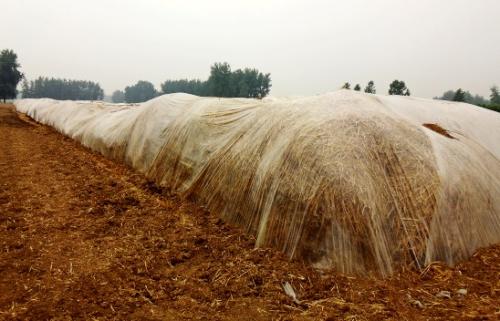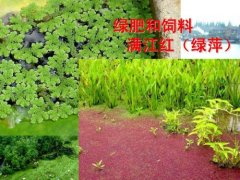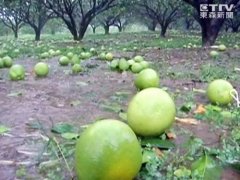Homemade organic fertilizer: what is compost? What are the benefits of composting?
Organic composting, composting is an ancient technology, do not need accurate calculation and advanced skills, as long as you pay attention, can not only solve the problem of waste environmental protection, but also improve soil productivity, it is worth adopting. Now let's take a look at it together.
Method of composting on farm
What is composting?
After the biological residues and animal excreta (sometimes with a small amount of ore or chemical fertilizer) are mixed with carbon-nitrogen ratio, moisture and aeration, the mature products are compost after a period of time and composting reaction (fermentation) by microorganisms.

Why make compost?
If a large amount of agricultural and livestock waste can not be properly disposed of, it will not only occupy space, but also affect environmental hygiene and reduce the quality of life; if it is disposed of or incinerated, it may cause secondary pollution of water quality, soil and air. Returning the valuable organic materials in these wastes to farmland soil after composting can not only solve the waste problem, but also improve soil fertility.
In the process of composting, organic carbon is metabolized by microorganisms, thus reducing the ratio of carbon to nitrogen. The heat generated can make the composting temperature reach more than 70 degrees Celsius and kill bacteria, insect eggs and weed seeds. If most organic materials are directly applied into the soil, toxic substances will be produced during decomposition, and oxygen will be consumed, resulting in soil reduction; if composting materials with a high ratio of carbon to nitrogen are directly applied to the soil, in the initial stage of decomposition, the availability of some nutrients in the soil will temporarily decrease, especially nitrogen; the reapplication of these materials after maturity can reduce harmful factors and avoid inhibiting crop growth. On the other hand, some composting materials have strong fibers, which are softer and easier to spread after accumulation; some have a strong odor, which is not only odorless but also has the aroma of soil after composting.
How to make compost
The process of composting is a series of microbial reactions, the composting material is like a culture medium, and it is like a fermentation tank after accumulation, so any factors that affect the activity of microorganisms are related to composting. The following describes the control or judgment methods during composting according to the ratio of carbon to nitrogen, moisture and air, temperature, pH, bacteria and maturity.
C / N ratio:
Microorganisms need carbon as energy and nitrogen for metabolization. the initial ratio of carbon to nitrogen is more than 30. After stacking fermentation, the ratio of carbon to nitrogen is gradually reduced to less than 20. The correct C / N ratio requires chemical analysis and calculation, and rough estimates can be made with reference to the commonly used composting materials listed on the next page. If it is still inconvenient to operate on the basis of weight, the materials can be divided into three categories: category An includes sawdust, grain husk, rice straw and peanut hulls, which provide carbon sources, constitute the main body of composting and determine physical properties; category B is chicken manure, pig manure, rice bran, soybean meal and meat bones, which mainly provide nitrogen sources to benefit microorganisms. Class C is cow dung, which can be applied in large quantities without composting. If it is estimated in terms of volume ratio, it may be appropriate that category B materials account for 1/10 to 1/3 of Class A materials. In addition, if the demand for phosphate or potassium fertilizer is high, the material with low ratio of nitrogen to phosphorus or low ratio of nitrogen to potassium can be selected, and the compost with high efficiency of phosphorus or potassium can be produced.
Moisture and air:
These two terms occupy the same space, so they rise and fall with each other. More water means less gas. Water is necessary for organisms and can not react when the content of water is less than 10% in composting, and because the aerobic reaction is faster and more complete than the anaerobic reaction, and the production of harmful substances is less, so when the water content is more than 90%, it will not be conducive to the reaction. The results showed that the composting reaction was most favorable when the water content was about 60%. In practice, you can hold the compost in the palm of your hand, and the water droplets seem to be dripping. There are two main methods of air supply: forced ventilation and pile turning. If there is ventilation equipment, the appropriate volume ratio of composting is 1x50 per hour. In order to avoid the volatilization of moisture, nitrogen and odor at the beginning, the stack can be turned once every one to two weeks, and the turn frequency can be slightly increased in the later stage. In order to maintain good aeration of compost, it is necessary to have additives such as bark, sawdust and rice husk in the material to make it suitable for ventilation.
Temperature:
The heat generated by microbial metabolism continues to accumulate and can normally rise to 60 degrees Celsius or even up to 70 degrees Celsius in a few days. This high temperature can be maintained for a period of time, which can not only promote microbial reaction and shorten the ripening time, but also kill bacteria, insect eggs, weed seeds and so on. Unless composting fails, high temperature is a normal phenomenon in the composting process. As the temperature is not easy to control, it is suggested that as long as the temperature is monitored and observed without special management.
PH:
There are different groups of microorganisms in different pH range, which can decompose different kinds of organic matter. although they adapt to a wide range of pH values, neutral is still the best. Therefore, except for extremely acidic or alkaline substances in the materials, it is generally not necessary to control the acidity and alkalinity. Compost is often neutral or slightly alkaline after ripening.
Strain:
There are many groups of microorganisms in the natural environment, so there is no need to deliberately add microbial agents as long as the conditions under which microorganisms can grow are maintained. However, if there are a large number of indecomposable substances in the materials, bacteria that specifically decompose this substance can be added to shorten the ripening time.
Maturity:
The aforementioned adverse problems may occur when compost with insufficient maturity is applied to the soil. There are many methods to determine the maturity of compost, but most of them need the results of chemical analysis as the basis. Generally speaking, the more likely method of self-judgment is to use seed germination and composting appearance changes. Select sensitive vegetable seeds such as cabbage, lettuce or radish, and wet them with compost hot water extract. If the germination rate reaches more than 60%, it can be determined that the compost does not seriously inhibit crop growth. In addition, after composting, the structure of compost is loose, dark brown or black, with no pungent smell and earthy flavor.
- Prev

Why does Manjianghong serve as green manure? Is Manjianghong an excellent green manure and feed?
Application of Manjiang Red and Green Fertilizer in Paddy Field farming: Manjianghong we have always been regarded as aquatic pollution plants, but in fact, it is good, if you do not know, then take a look at this. It is of great use in paddy fields. Reduce food crops
- Next

How to do composting: production and utilization of Wendan fruit drop composting technology
The production and utilization of Wendan fruit composting Hualien area is often hit by typhoons every year during summer and autumn, and Wendan fruit ripening period occurs in July and August, so it often causes great losses to fruit farmers. A large number of Wendan fruit drop has a great impact on the environmental hygiene of the orchard, not only
Related
- Fuxing push coffee new agricultural production and marketing class: lack of small-scale processing plants
- Jujube rice field leisure farm deep ploughing Yilan for five years to create a space for organic food and play
- Nongyu Farm-A trial of organic papaya for brave women with advanced technology
- Four points for attention in the prevention and control of diseases and insect pests of edible fungi
- How to add nutrient solution to Edible Fungi
- Is there any good way to control edible fungus mites?
- Open Inoculation Technology of Edible Fungi
- Is there any clever way to use fertilizer for edible fungus in winter?
- What agents are used to kill the pathogens of edible fungi in the mushroom shed?
- Rapid drying of Edible Fungi

